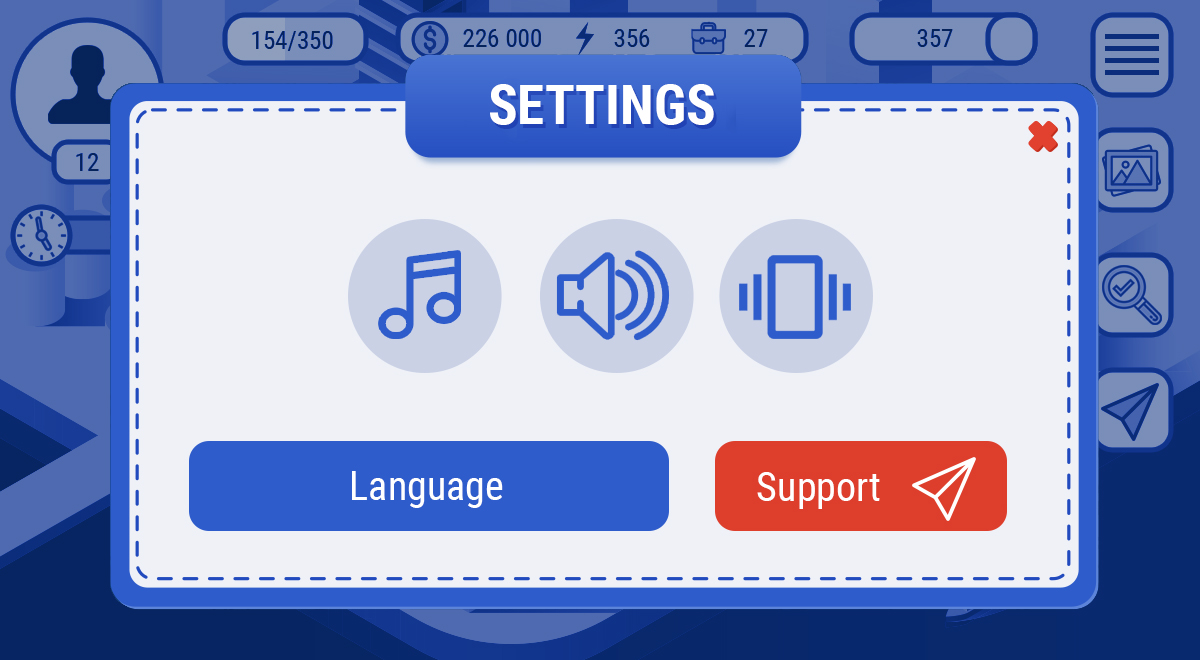Support As a Part of User Experience
Meet the third article in this series written by Ekaterina Rogacheva, the head of community and support at Azur Games, in collaboration with the Ansvery.
Before I start describing support as part of the user experience, I’d like to say a few words about what the user experience (UX) is. Simply put, the UX is the subjective opinion of the user, including their physical and psychological reactions formed while interacting with the game.
The user’s opinion can be affected by many factors, from design of the application and its individual parts, the positioning of the application on the market, and its method of interacting with its users to the emotions the person feels when they launch the game, including their mood, habits, beliefs, expectations, and personal characteristics, as well as their overall physical and mental state.
Needless to say, providing your users with a great UX is a crucial aspect of retaining them, getting them to come back to the game, and even monetizing them. And the best way to create a positive UX is to base it on your users’ feedback. Let the users tell you what makes them happy – and, even more importantly, what annoys them – and you’ll always be able to make sure they’re getting the best UX possible. Not to mention that even the same person will react to a bug or malfunction within the game differently if they’re tired rather than happy or excited. But is there a way for us to somehow affect these situations?
Support as part of the UX can be viewed from different angles. In this article we’re going to closely examine the most important aspects of interacting with the audience through support and discuss their main features.
If a player contacts support, it usually means that they’re willing to have a dialog with you and that they’re interested in your game. Your goal is to make this communication as pleasant and simple as possible. How can you achieve that?
Contacting support should be easy
The process of communicating with support should be simple for the player. This becomes even more important if the player has run into a critical issue. The more hoops they have to jump through in order to contact you, the higher the chance they’ll lose their patience and leave the game. Therefore, if your support staff resources allow you to process all incoming tickets, we suggest placing a “new request” button or your support service’s email address in an easily accessible spot. You can read more about different support integration options and their pros and cons in this article.

Urgent question should be answered quickly
If a player is experiencing problems with in-game purchases or facing issues that don’t allow them to play the game, the speed of your support service’s response is especially important. 24 hours is considered to be a common average response time – we suggest setting it as a maximum. However, a more rational option would be to sort requests by categories and set an average response time limit for each of them. This way you can effectively manage your agents’ time, and the players with the most critical issues will receive a response before, say, players who’ve contacted you to share their suggestions on the game.
Your support service’s assistance should be effective
The problems your users report can be divided into two categories:
-
Problems you have a ready-made solution for
-
Problems you don’t have a solution for
While solving the first type of issue comes down to providing the player with certain steps that will rectify the problem, the second type is more complicated to deal with. Fixing certain issues can sometimes take multiple patches, and the player wants your help instantly. You should focus on giving these players an answer that will let them understand that the issue is already being dealt with. Don’t be afraid to explain that some problems are harder to fix than others and this particular problem is taking longer to solve because you’re focused on making the solution as effective as possible.
You should have a clear position regarding compensation and refunds
-
Compensation
If a player reports an issue and you have a solution for it, you’re in luck. But if you don’t have an instant solution for the problem, providing compensation for the inconvenience could be a good option. Establish a reasonable amount of compensation for each issue that takes longer to fix and provide it when necessary.
Compensation can also work well when a player requests a refund due to some kind of in-game problem. According to our experience, up to 50% of users who receive compensation change their mind.
-
Refunds
Users may request a refund if a payment has been made by accident (if, say, a child, friend, or neighbor made the purchase without telling them) or if they are unhappy with an item they purchased or the project in general. Sometimes a user might intend to buy a certain item, but accidentally purchase the wrong thing. List all of the possible reasons a player might want to request a refund and define your position regarding each of them.
Your communication style shouldn’t be too formal
When a user contacts support, they’re often experiencing strong emotions, whether negative or positive. You should consider this when writing a response. While the support agent should always be polite and reserved, care for the player should be a motif that runs throughout their response. Mobile game players usually prefer a less formal communication style. According to an American study, roughly 10% of users give a low rating to a support service if their style of communication is too formal – they feel like they’re talking to a robot, not a real person. Try to stay away from insipid “business correspondence” formulas – use “I” instead of “we” (unless you’re talking about the whole developer team), tell them your name, and avoid clichéd phrases such as “best regards” or “best wishes” – replace them with more personal ones like “see you in the game!”, “good luck in battle!”, etc.

The risks of having poor support – or none at all
If you don’t pay enough attention to each of the points discussed above, or if you don’t provide customer support at all, you’re running the risk of facing unwanted consequences such as:
-
Losing new and/or engaged players
-
Decreased conversion to paying customers and unwillingness to make purchases
-
Refund requests
-
Bad reviews and ratings online and in stores
-
Lack of trust in the company and decreased player loyalty
What about indies?
Not all companies are willing or able to spend their time and money on technical support. This especially applies to indie developers. In this case, they need to be prepared to face the risks described above. It might seem like the risks aren’t that great considering that, according to statistics, less than 5% of all users contact support. But keep in mind that, among those who do contact you, there is a high percentage of engaged and paying players, and providing them with support will be repaid with interest in most cases. Therefore, even smaller companies should consider dedicating resources to support.
To sum up our discussion of how support is part of the user experience, I’d like to say that high-quality support is more than just a service that players can easily access in order to get timely, polite, and useful responses that clearly communicate the company’s appreciation for its players; it’s also an effective tool for creating the best possible experience for your users as they interact with your product.




